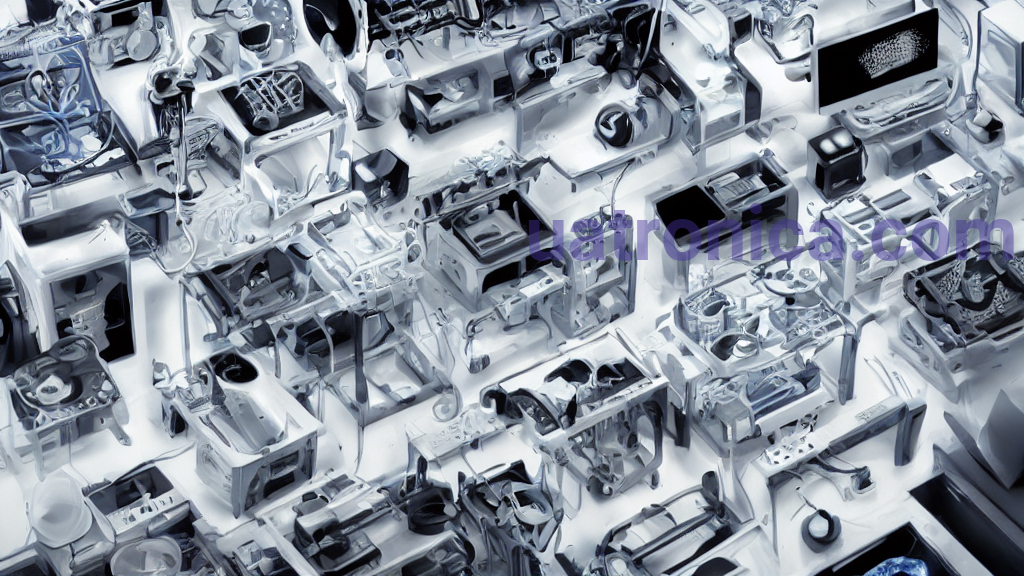12 Amazing Technological Inventions That Made The World Rethink Electronics!
The modern world is developing rapidly thanks to numerous technological innovations. Electronic components have become the basis of many new developments that change our lives. This article is devoted to innovations in electronics, which have had a significant impact on various fields, from everyday life to industrial applications. Let's take a closer look at 12 amazing technological inventions that made the world rethink the way we think about electronics.
1. Smart phones
The smart phones we use today are the result of many years of development. They combine not only telephony, but also powerful computers capable of performing complex tasks. According to Gartner research, more than 1.3 billion smartphones will be sold worldwide in 2021. It's particularly interesting to note that many of them have features that once seemed like science fiction, such as face and voice recognition. For many people, the smartphone has become the main tool for accessing information and communication, which increases their productivity in everyday life.
2. Internet of things
The Internet of Things is a network of devices that interact via the Internet. From smart thermometers in your home to cars that can park themselves, IoT is transforming ordinary things into smart objects. Statistics show that by 2025 there will be more than 75 billion connected devices on the planet. This technology significantly increases the efficiency of resource management, reduces costs and ensures security. Universities and research centers are actively exploring new IoT possibilities, such as smart cities and automated control systems.
3. Smart watches
Smart watches are not just a stylish accessory, but also an important electronic device for monitoring health and activity. They can monitor heart rate, blood pressure and even stress levels. According to IDC, smartwatch sales grew by 20% in 2020 compared to the previous year. A great example is watches that can send alarms in case of abnormal health indicators, which can save lives.
4. Virtual and augmented reality
Virtual (VR) and augmented reality (AR) are already used in many fields: from gaming to medicine. For example, in medicine, VR can be used to simulate surgeries, allowing doctors to practice on virtual patients. However, this is not their only application - AR technologies are actively used in education, helping students visualize complex concepts. The AR/VR market is expected to reach $209.2 billion by 2025.
5. Autonomous vehicles
Autonomous cars are revolutionizing transportation. They use a combination of cameras, sensors and artificial intelligence to perceive the environment. For example, Waymo is already testing its autonomous cars in several US cities. This technology has the potential to significantly reduce road accidents by removing the human factor from driving. Despite this, there are numerous challenges related to the legal and ethical aspects of using such cars.

6. 5G technologies
The emergence of 5G technologies provided a significant increase in data transfer speed - up to 20 Gbit/s. This opens up new opportunities for IoT and other high-speed applications. According to forecasts, the number of 5G connections will increase to 1.5 billion by 2024. As speeds increase and latency decreases, so does the need for new technologies, such as wireless VR and AR experiences, that will drive important changes in the way people interact with the world.
7. Quantum computers
Quantum computers promise much more than modern supercomputers. They use quantum bits to perform complex calculations at incredibly high speeds. Research shows that quantum computers can solve problems that are currently inapplicable to classical computers. These technologies are already being explored for applications in financial markets, risk management, and genomics and biotechnology.
8. Cryptocurrencies and blockchain
Cryptocurrencies such as Bitcoin and Ethereum have become a new financial space. The use of blockchain technology ensures safe and transparent transactions. According to CoinMarketCap, the total capitalization of all cryptocurrencies will exceed $2 trillion in 2021. Due to the distribution of information, blockchain also provides a high level of security, which makes it promising for applications in various areas, including supply chain management and voting.
9. LEDs
LEDs have become an important part of modern lighting. They save electricity and have a long service life. According to Energy Star, LEDs use 75% less energy than traditional incandescent bulbs. LEDs have found their application not only in lighting, but also in displays, car headlights, advertising, and also in medical devices. Their advantages in reducing electricity costs make them popular in many areas.
10. Wearable technologies
Wearable technologies such as fitness bracelets and medical monitors are revolutionizing the treatment and prevention of diseases. They allow you to monitor health in real time, providing doctors with important information about the condition of patients. According to statistics, the wearable technology market will grow to 62.1 billion dollars by 2026. One of the key advantages of this technology is the possibility of early diagnosis of diseases, which can significantly reduce treatment costs.

11. 3D printing
3D printing is changing production processes in various fields, from medicine to fashion. This allows you to quickly manufacture prototypes or individual products. According to forecasts, the 3D printing market will reach $34.8 billion by 2024. For example, with the help of 3D printing, doctors can create accurate models of organs to prepare for surgery. This opens up new opportunities for personalization of products and shortens the time of production of goods.
12. Smart offices
Smart offices integrate various technologies to improve productivity. This includes automation, advanced energy management systems and communication technologies. According to MarketsandMarkets, the smart office market will reach $57.8 billion by 2024. Integrating IoT into workspaces allows for automatic lighting, temperature, and even scheduling of meetings, reducing overall costs for companies.
Technological innovations and their role in everyday life
Implementation of these innovations in electronics changes not only industry, but also our everyday life. Modern technologies provide new opportunities for the development of business, communications, medicine and education. However, with these advantages also come new challenges. Data security and environmental consequences of the use of new technologies are becoming important issues for society.
Today, for example, promoting critical thinking in the use of new electronic devices is key to reducing the impact on the environment. Such components as 0218-500MXP-LTL and MCP1824T-1802E, create opportunities for the development of new technologies that will be able to satisfy user requests and meet environmental standards.
Researchers continue to study how innovations in electronics can help make our world a better place. This includes not only the development of new technologies, but also the improvement of existing ones, which also requires cooperation between scientific institutions and manufacturing companies. For example, the development of technologies to automate repetitive tasks can create new jobs in innovative fields.
Also, an important aspect is the awareness of environmental consequences and the creation of technologies that reduce CO2 emissions. Research shows that the introduction of low-energy electronics can significantly reduce the burden on the ecosystems of our planet. For more information on the latest electronic solutions, visit our articles: Technologies of the future and Innovative technologies. The development of the electronic industry continues, and new ideas are always waiting to be implemented.
Conclusion
Technological advances in recent decades have demonstrated how rapidly the world is changing thanks to innovations in electronics. From smartphones to quantum computers, these developments not only increase comfort in everyday life, but also open up new areas for development and research. Business, urban planning, health care and many other areas have been directly affected by today's innovations.










